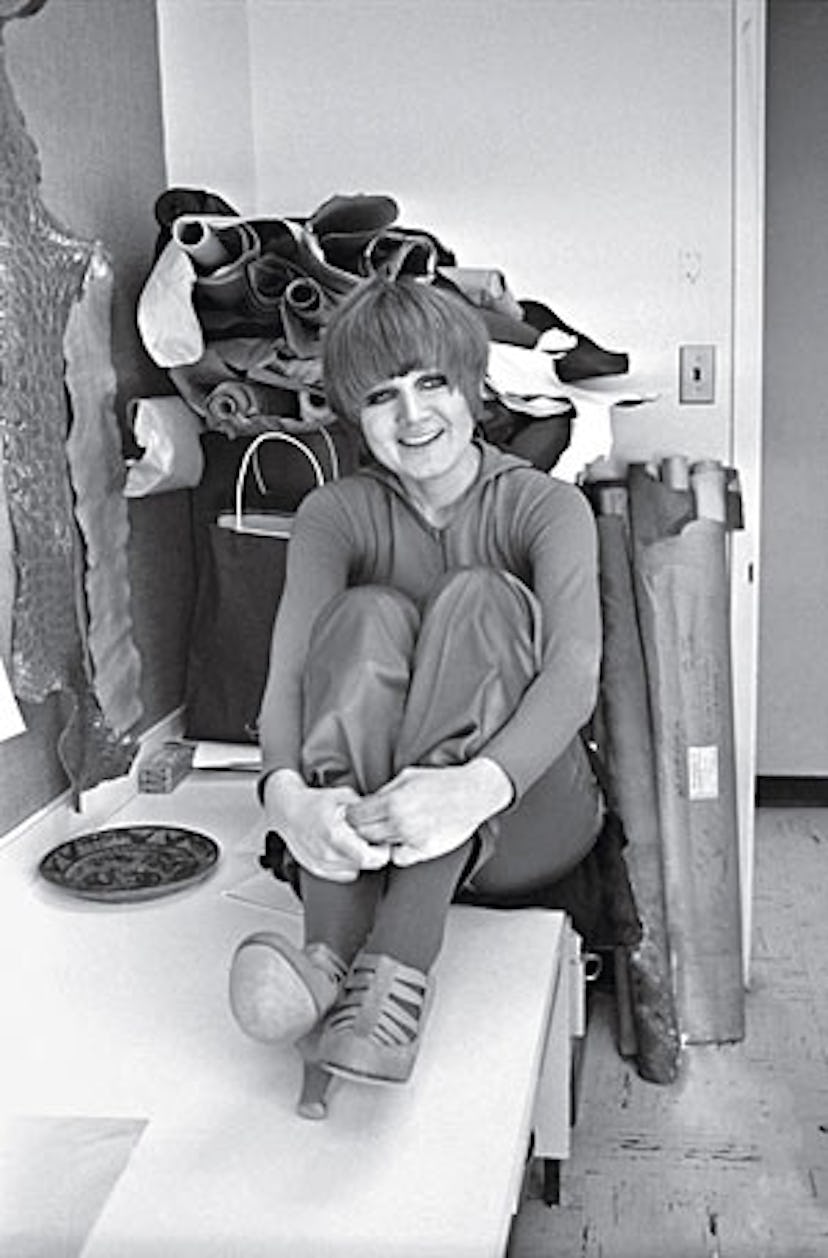Heavens to Betsey

Many in fashion can be described as marching to the beat of their own drummer, but Betsey Johnson has always danced to the beat of her own band. Since 1965, when she got her start as in-house designer for the New York boutique Paraphernalia, Johnson has served as a quirky alternative to the rest of the fashion universe.
“My customers don’t know a thing about Paris…or Beene or Blass for that matter,” she told Women’s Wear Daily, W’s sister publication, in 1969, the year she opened her first shop, Betsey Bunki Nini, on the Upper East Side. “My customer isn’t wrapped up in labels and money.”
Instead, her clientele is drawn to her distinct—and ever changing—point of view. In 1971, designing under the label Alley Cat, Johnson told WWD, “I think the whole civilized thing is stupid,” and advocated a mix-and-match aesthetic. Two years later she informed W that she liked “everything soft, beautiful and womanly.” In 1979, a year after launching her namesake brand, she said it had “all the elements of the Sixties—the length, the shine, the high-tech look of the industrial zipper.” In 1985 she claimed her signature silhouette was “a tight leotard top and flared bottom.” By 1991 she was pushing a ballerina look: “It’s retro, tutus, petticoats, a little bit of Heidi.”
It may sound odd coming from such a non-conformist, but in 1986 Johnson told W she’d modeled her business on the world’s largest fast-food chain. “When you walk into a McDonald’s anywhere in the world…you know exactly what you’re getting,” she said. “They have a formula, and so do we.”
Still, the economic downturn won’t have Johnson pursuing a second career in restaurants (though it did force her, along with other designers, to drop out of February’s New York Fashion Week). When WWD asked 20 fashion heavyweights in 1990 what they would have been had they not become designers, Johnson replied, “Dead. I couldn’t live if I wasn’t a designer.”